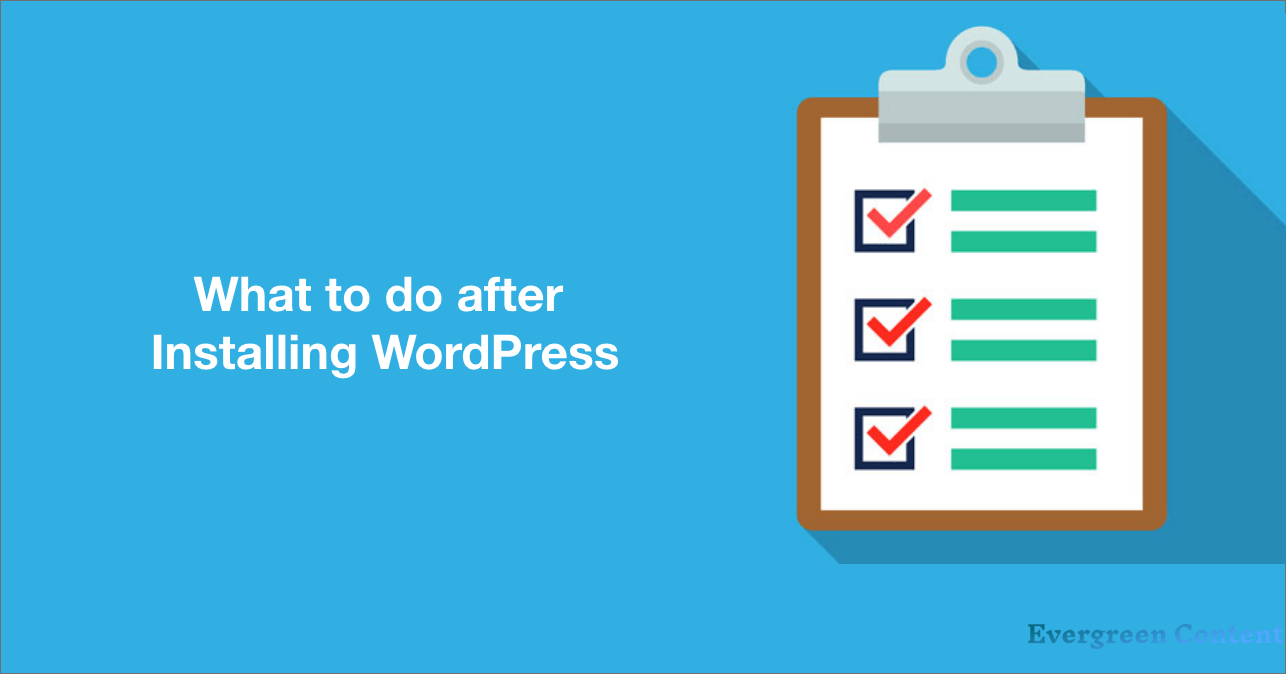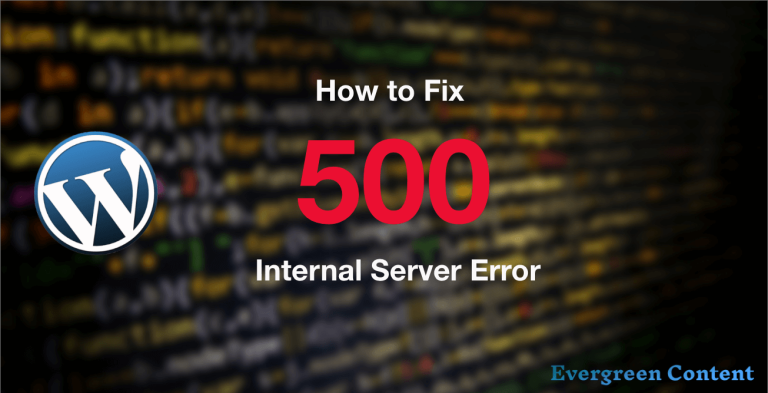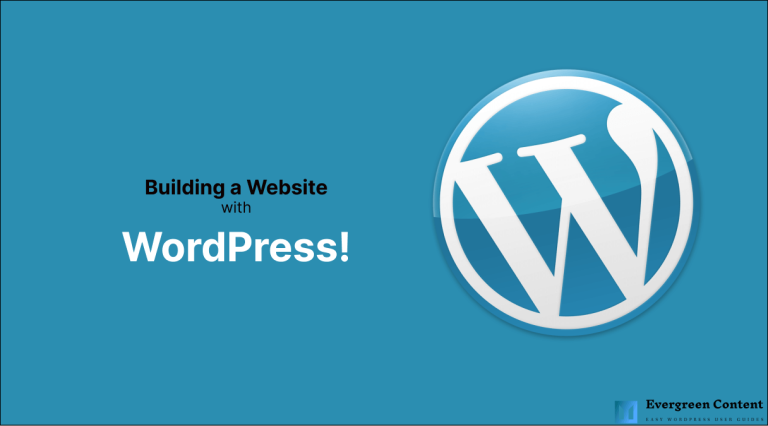What to Do After Installing WordPress? (15 Essential Things to Check)
WordPress has been the hottest CMS for years now.
WordPress powers over 43% of sites online.
If you’ve just installed WordPress on your web host, you’ve done an excellent job.
But installing WordPress is simply the starting, it’s time to do a few more things after installing WordPress.
If you’re a beginner planning to start your online journey with WordPress or you’ve just installed WordPress but don’t know what to do next, this checklist is for you.
We follow this checklist whenever we start a replacement WordPress blog.
What to Do After Installing WordPress
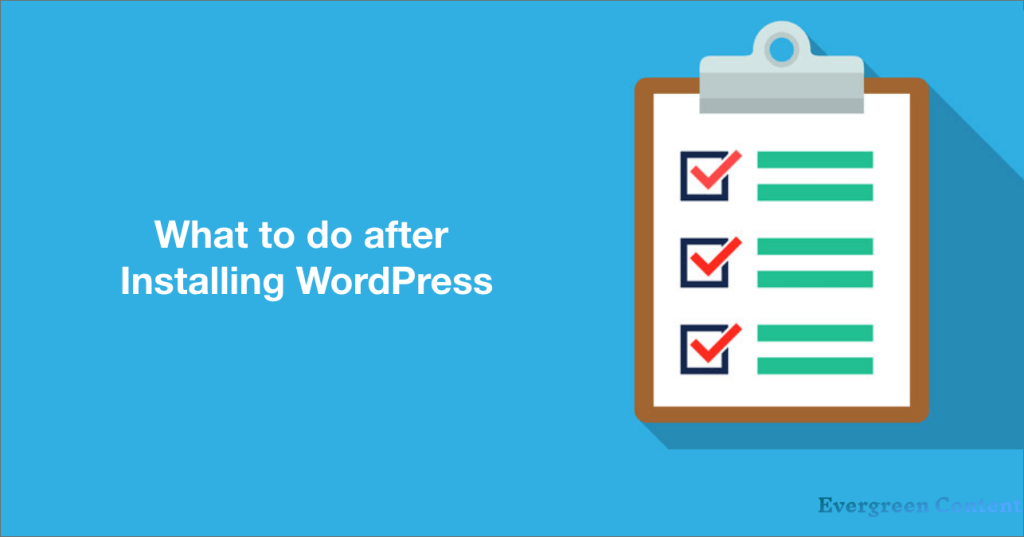
There are the 15 Things to Consider after Installing WordPress.
- Get Familiar with WordPress Dashboard
- Change Permalink Structure
- Active the Akismet Anti-Spam Plugin
- Delete the Sample Contents/Pages
- Set Title, Tagline, and Timezone
- Configure Commenting Policy
- Choose WWW or Non-WWW
- Change Your Default Theme
- Add Site Icon & Logo
- Install Essential Plugins
- Update Your User Profile
- Connect Your Site With Google Analytics, Search Console & Bing Web Master Tools
- Add Related Widgets to Sidebar
- Add New Post Categories
- Create Essential Pages
Let’s dive into the details.
1. Get Familiar with WordPress Dashboard
When you’ve just installed WordPress, the first thing you’ll want to do is get familiar with your WordPress dashboard.
It’s the control panel for your site, so you’ll be spending a lot of time in it throughout the rest of your site’s life!
You can access your WordPress dashboard by appending /wp-admin to the end of your site’s URL.
For example-
yoursite.com/wp-admin
If you haven’t already logged in, WordPress will prompt you to before you can view the dashboard.
The main dashboard gives you a basic summary of your site. To access additional areas, you’ll use the sidebar menu on the left:
Each menu item on the left will also include a number of sub-menus when you hover over it.
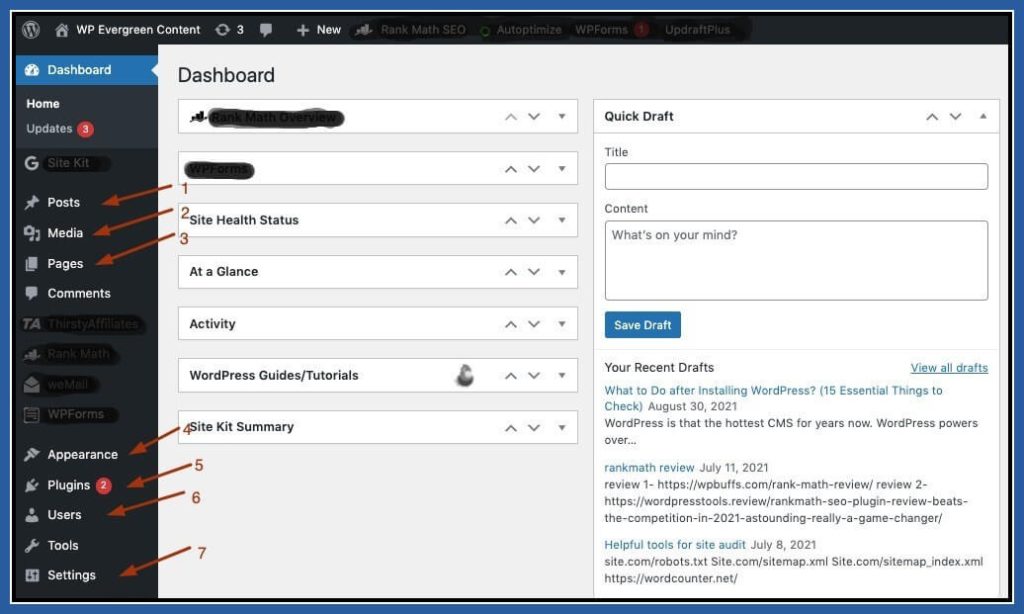
To create new content, you’ll use the Posts and Pages menus:
Posts — these are blog posts.
Pages — static pages, such as your ‘About’ or ‘Contact’ pages.
To manage your site’s extensions, you’ll use the Appearance and Plugins menus:
Appearance — install and customize your WordPress theme, which controls your site’s appearance.
Plugins — install and manage your WordPress plugins, which add new functionality to your site.
Finally, when you’re just getting set up, you’ll spend a lot of time in the Settings area. However, once you configure all of the settings, you’ll mostly ignore this area in your day-to-day site management.
Once you feel comfortable working with the WordPress dashboard, you’re ready to dig in to the rest.
2. Change Your Permalink Structure
Your WordPress site’s permalink structure controls the part of your website’s URLs that comes after your main domain name.
For example, if the URL of a post is ‘yoursite.com/things-to-do-after-installing-WordPress, then the permalink structure controls the ‘things-to-do-after-installing-WordPress part.
It’s an important consideration for both user experience and search engine optimization (SEO), because you can use the words in your permalinks to provide important context about the content of a post.
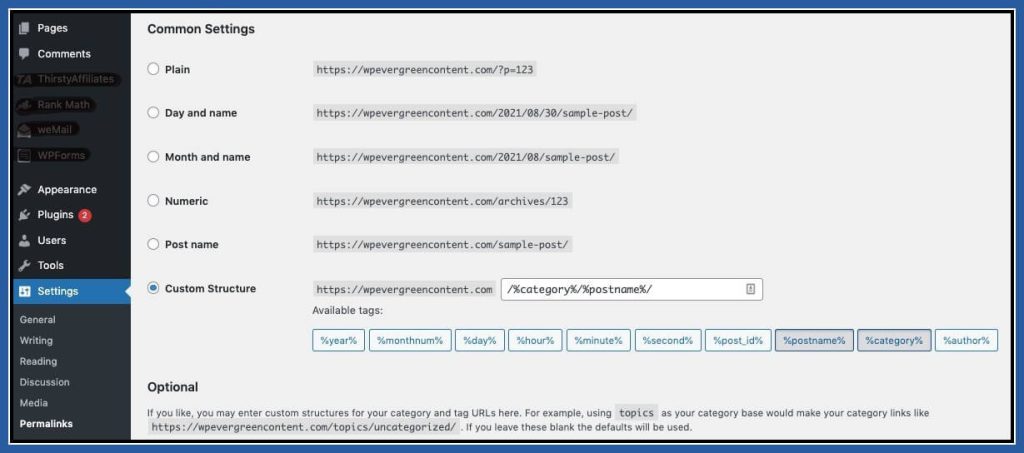
However, many fresh WordPress installs use an unoptimized permalink structure based on numbers, such as ‘yoursite.com/?p=123‘.
To fix that and choose an optimized permalink structure, you can go to Settings → Permalinks.
For most websites, the best option is to choose the Post name structure. However, if your site posts time-sensitive news, it may also make sense to choose a permalink structure that includes the date.
3. Active the Akismet Spam Protection Plugin
If you’re new to WordPress, you’ll not remember comment & trackback spam. this stuff is really annoying.
But the great news is, that WordPress features a pre-installed plugin called Akismet that helps you to urge obviate this spam.
All you’ve got to try is to activate the plugin and enter the API key. Now attend your WordPress Dashboard > Plugins > Installed Plugins and activate the Akismet plugin.
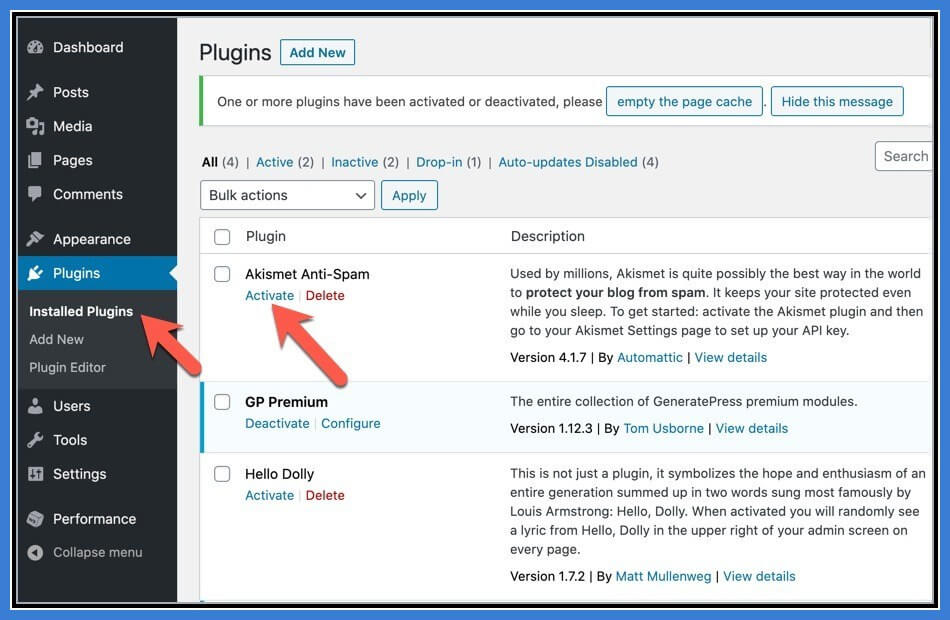
To activate your Akismet account, you would like to use an API key. Here’s the way to find out about Akismet With a free API key.
4. Delete the Sample Contents
By default, WordPress creates some sample content to assist you in knowing various things. You ought to delete them directly before starting to build your site.
Here are 4 sorts of content that require getting rid of.
1. “Hello world” Post: to get rid of this sample post, attend WordPress Dashboard > Posts > All Posts and click on “Trash” under Hello world post.
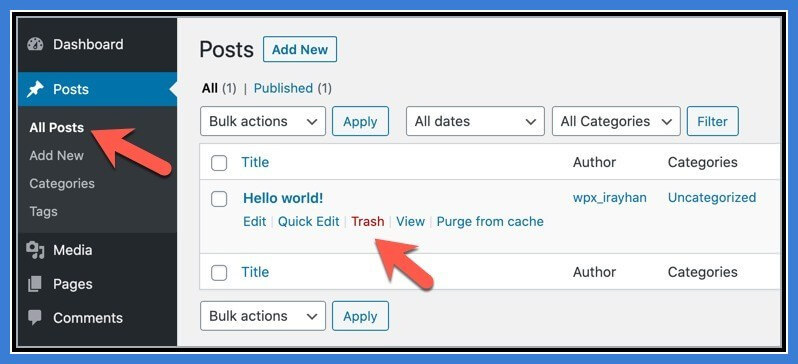
2. “Sample Page” Page to get rid of the sample page, attend Pages > All Pages and click on “Trash”. And it’ll be deleted.
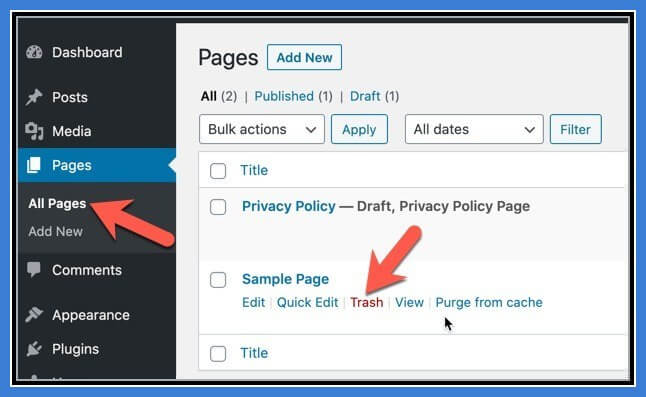
3. “Mr. WordPress” Comment: This comment is going to be deleted automatically once you delete the “Hello world” post.
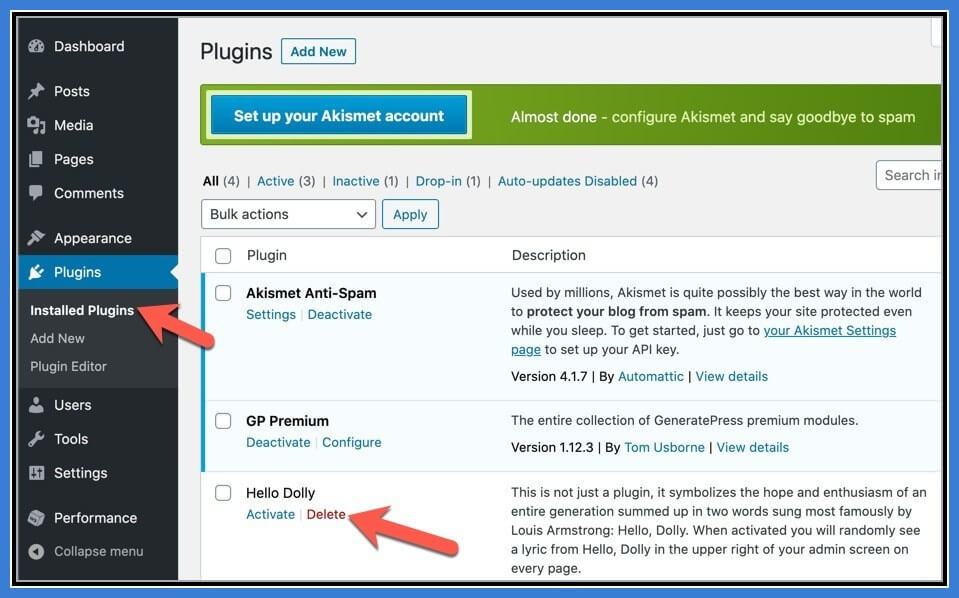
4. “Hello Dolly” Plugin WordPress also comes with a default plugin named “Hello Dolly”. This plugin isn’t necessary.
To delete the plugin, attend Plugins > Installed Plugins and click on “Delete”.
This will delete the plugin.
5. Set Title, Tagline, and Timezone
Setting the Title, Tagline and Timezone is extremely easy. But most of the newbies neglect this stuff.
Title and Tagline make it easier to know what’s your site about. A proper time zone is important for scheduling your posts.
You can set all of those from an equivalent page. Just attend Setting > General and enter your Site Title and Tagline.
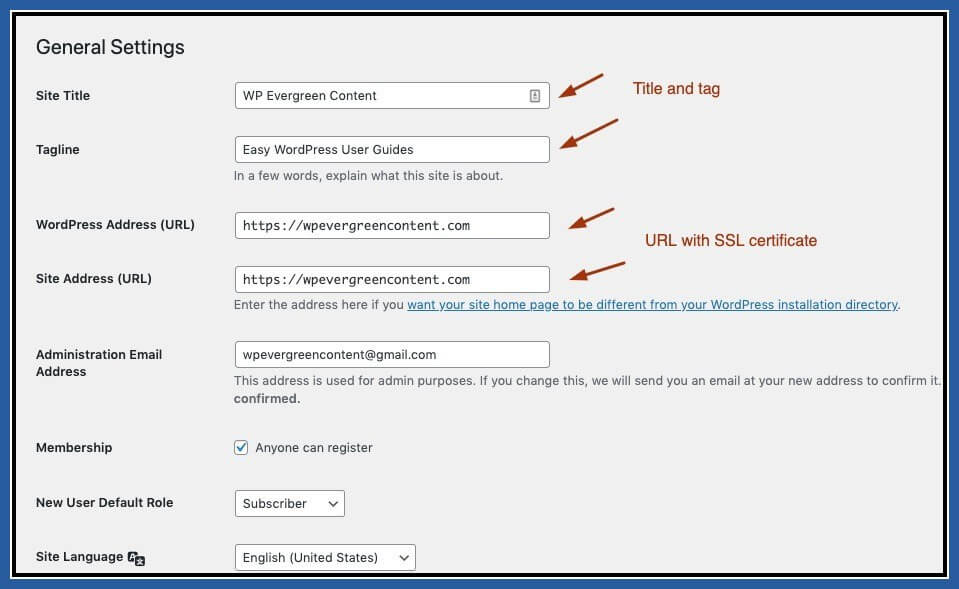
If you’re unsure what to write down on Tagline, roll in the hay later. Then scroll down and choose a city within the same timezone as you.
And click on “Save Changes”.
6. Choose WWW, Non-WWW (Activating SSL Certificate by hosting partner)
WordPress allows you to choose the WWW or non-WWW version of your site. you’ve got to settle on one for your site. there’s no much difference between the version. But the matter is going to be raised if you modify it later.
If you select the non-WWW version, then your blog URL is going to be http://yourdomain.com, and if you select WWW, it’ll be http://www.yourdomain.com.

Search Engines will consider both as two distinct addresses. So if you modify it frequently, tons of duplicate pages are going to be created in Google Index. it’s very harmful to SEO.
Here at RoadToBlogging, I’m using the non-WWW version. By default, WordPress keeps it as non-WWW. If you would like to feature WWW in your WordPress blog, attend Settings> General and add WWW to your WordPress Address and Site Address.
Click on “Save Changes”.
7. Configure Commenting Policy
By default, anyone can leave a comment on your blog posts. You’ll need to manually approve a person’s first comment, but after that, they can comment freely.
Depending on the type of site you’re creating, you may want to use a different commenting policy. For example, you could:
require users to register to leave a comment and automatically close comments after a certain period of time.
To adjust your site’s comment rules, or turn off comments altogether, you should go to Settings → Discussion.
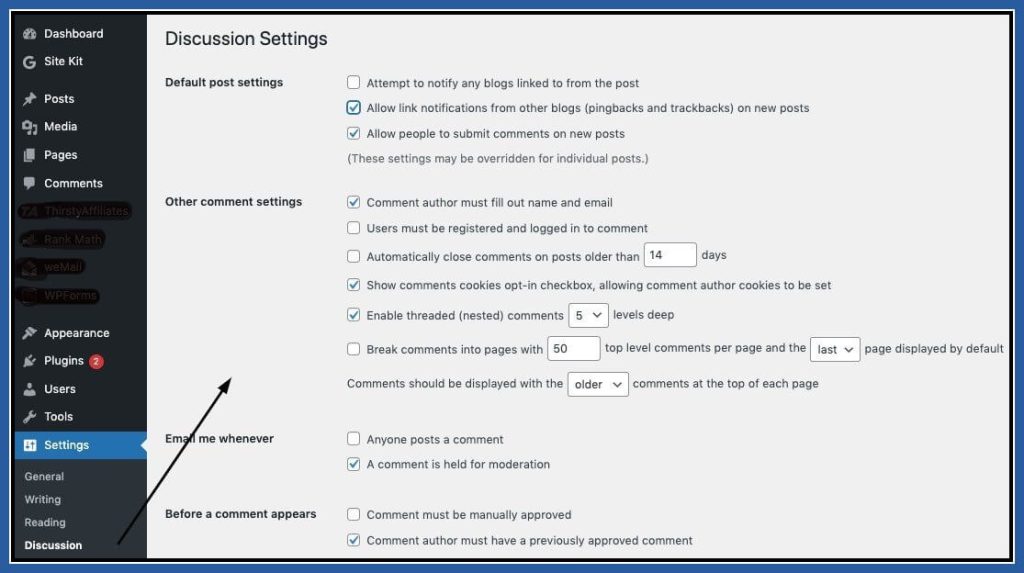
In addition to controlling who can comment, you can also set up comment moderation rules to make your life easier:
8. Change Your Default Theme
WordPress Installation comes up with some default WordPress themes. Those are good for private blogs.
But if you’re getting to create a knowledgeable blog/site, you ought to think about using a far better theme.
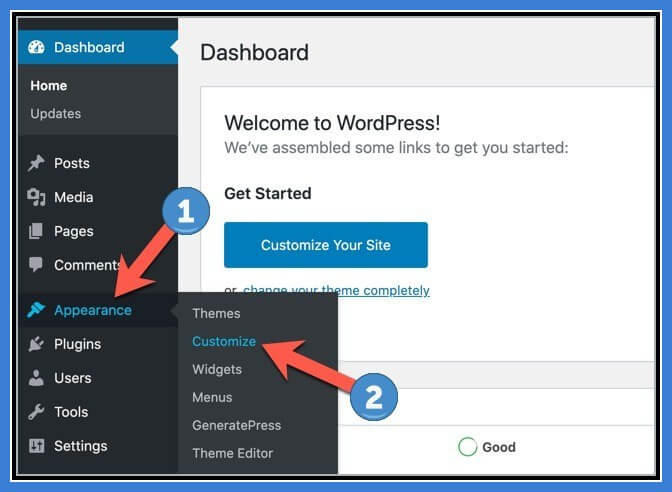
WordPress features a huge collection of free and premium themes. you’ll start with a free theme once you are just started. But if you would like to take a position for some money, then accompany a premium theme.
Here are some popular light-weight WordPress themes–
- GeneratePress
- Divi
- WPSchema
- Kadence
- OceanWP
- Neve
You can get to find out more WordPress themes here.
Once you’ve found the proper theme for your WordPress site, check – the way to Install a WordPress Theme.
9. Add Site Icon & Logo
A site icon may be a small icon that shows on the browser tabs and bookmarks mostly. A logo is a small design that represents your site around the web. It’s crucial to possess a unique favicon and logo to extend your brand awareness.
You can create a site icon by using Photoshop or other tools. If you don’t have design skills, you’ll use online tools like Favicon.cc or X-Icon Editor.
When it involves designing a logo, you’ll roll in the hay yourself by using Photoshop or online logo maker tools. Otherwise, you would like to hire someone to make a logo for you.
Once you’ve prepared the favicon and logo, attend WordPress Dashboard > Appearance > Customize.
Then click on ‘Site Identity’.
Then upload the logo and site icon.
Just click on ‘Publish’ and you’re done.
10. Install Essential Plugins
The best thing about WordPress is, that you’ll do almost everything in WordPress by utilizing a plugin.
That means you don’t get to have any coding skills to feature functionality in WordPress. And there’s a plugin for love or money you would like to accomplish.
However, there are some common WordPress plugins that are essential for nearly all kinds of WordPress sites. Here are some essential plugins –
- Rank Math (All-in-one SEO plugin)
- Google’s Site Kit
- Addtoanyshare buttons (Social sharing plugin)
- Jetpackboost (To speed up your site)
- Ninja Forms (Contact form plugin)
- WP Table Builder (Table builder plugin)
- W3 Total Cache (WordPress cache plugin)
- Updraftplus (Free Backup service)
11. Update Your User Profile
Having biographical info and a profile picture helps your readers to understand more about you and to attach you.
To update your user profile, attend WordPress Dashboard > Users > Profile. Then enter your name, contact info, biographical info, etc. you would like to make a Gravatar account to point out your profile picture.
Your biographical info and profile picture are going to be displayed under every blog post like this –
You can also use an author box plugin like Fancier Author Box or Fanciest Author Box to make your profile more attractive.
12. Connect Google Analytics, Search Console & Bing Web Master Tools
Google Analytics and Search Console are the must-have tools for site owners.
Google Analytics tracks your visitors and the Search Console helps you to watch your site performance in Google Search. Both are free and you can connect them via Google Site Kit plugin.
You need to attach your site with Google Analytics and Search Console to trace your site performance.
13. Add Widgets to the Sidebar
Almost all of the WordPress themes have a widget-ready sidebar. It is normally placed on the right or left-hand side of the webpage. you’ll add a Social Media widget, Recent Posts widget, Facebook Like Box widget, etc on your sidebar.
WordPress has some built-in widgets. And most of the premium WordPress themes also add additional widgets to your WordPress site.
To add a widget in your sidebar, attend WordPress Dashboard > Appearance > Widgets.
Then drag a widget (that you would like to add) from “Available Widgets” to “Sidebar.” Click on the widget and configure the widget setting.
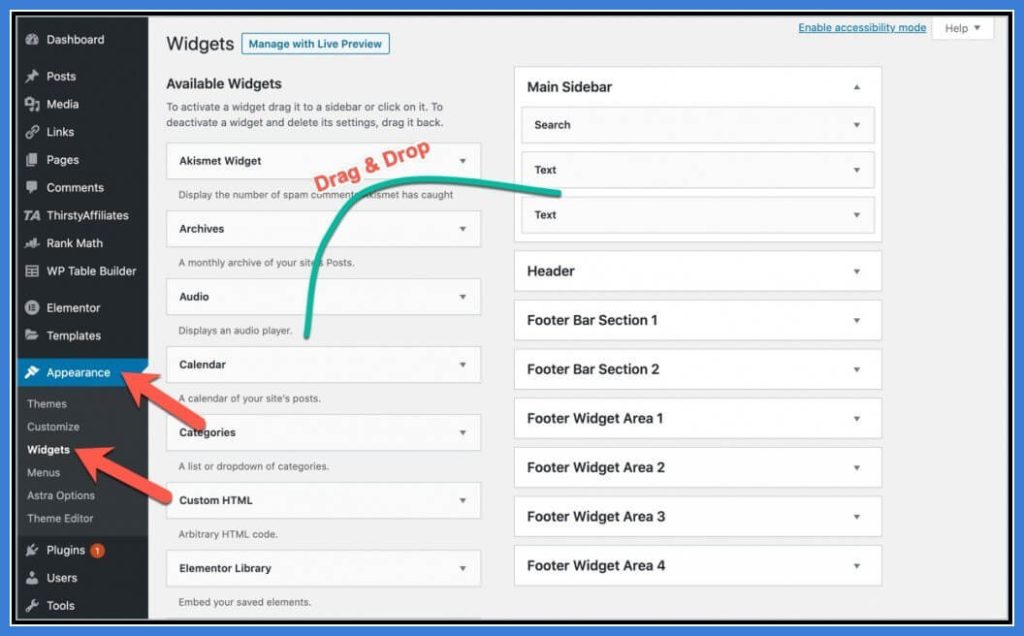
You can install more widgets from WordPress Plugin Directory or CodeCanyon.
14. Add New Categories
While you’ll add a replacement category when writing a post, it’s recommended to feature all categories before publishing posts. it’ll assist you in planning your posts properly.
To add categories, attend WordPress Dashboard > Posts > Categories. Then enter your category name, slug (URL), and outline. and click on “Add New Category”.
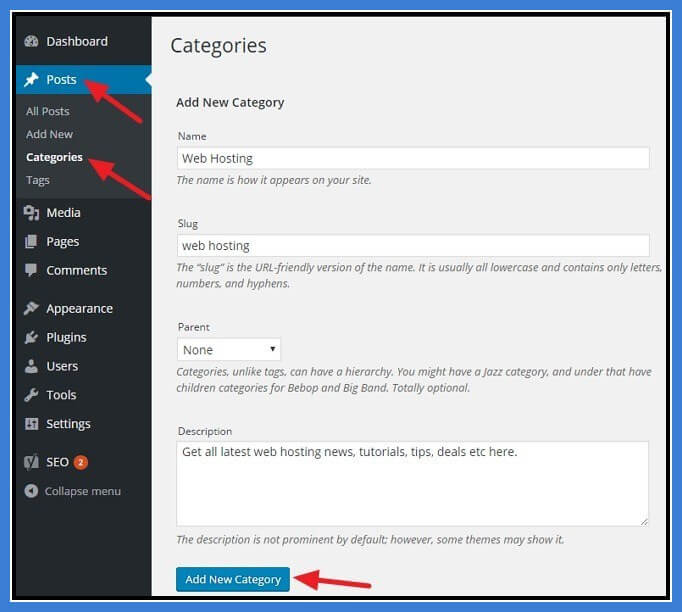
Add New Category to WordPress
15. Create Essential Pages
Like every website, WordPress sites need some essential pages. you ought to build these pages before publishing posts. These pages vary from niche to niche.
Here are three important pages that you simply should build immediately.
- Home
- About
- Contact
- Privacy Policy
So, Here is What to Do after Installing WordPress to Give Your Site A Go!
These are the 15 items that you simply should do after installing WordPress.
Proper installation and customization are a must to ensure your WordPress site’s growth and future success.
One mistake in the customization process can hold you back and require a lot of effort to recover the loss.
So, try to follow the guide, you can do it with ease.
If you’ve faced any issues regarding this stuff, allow us to know via comment.

